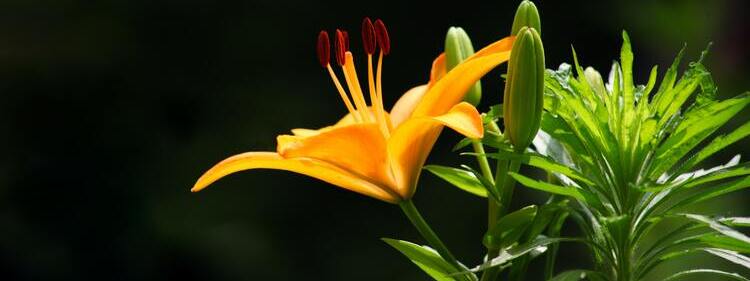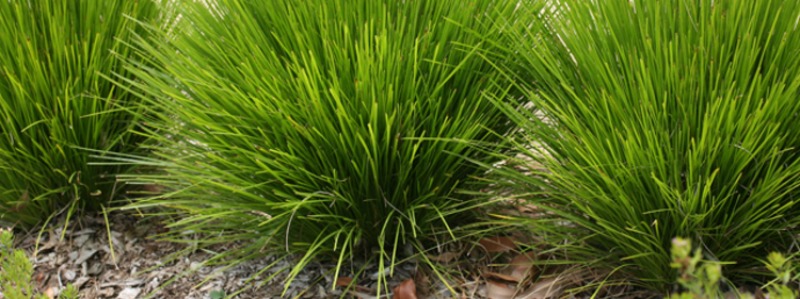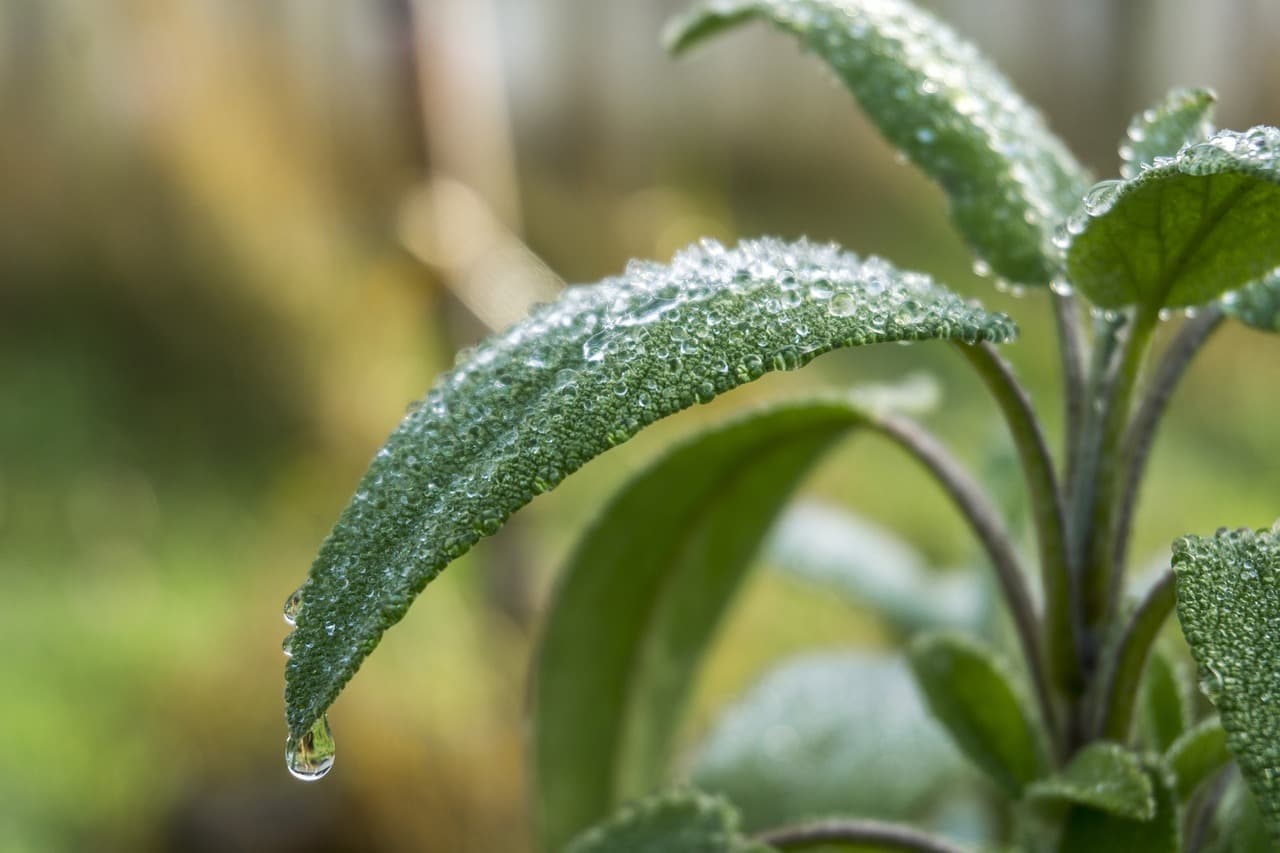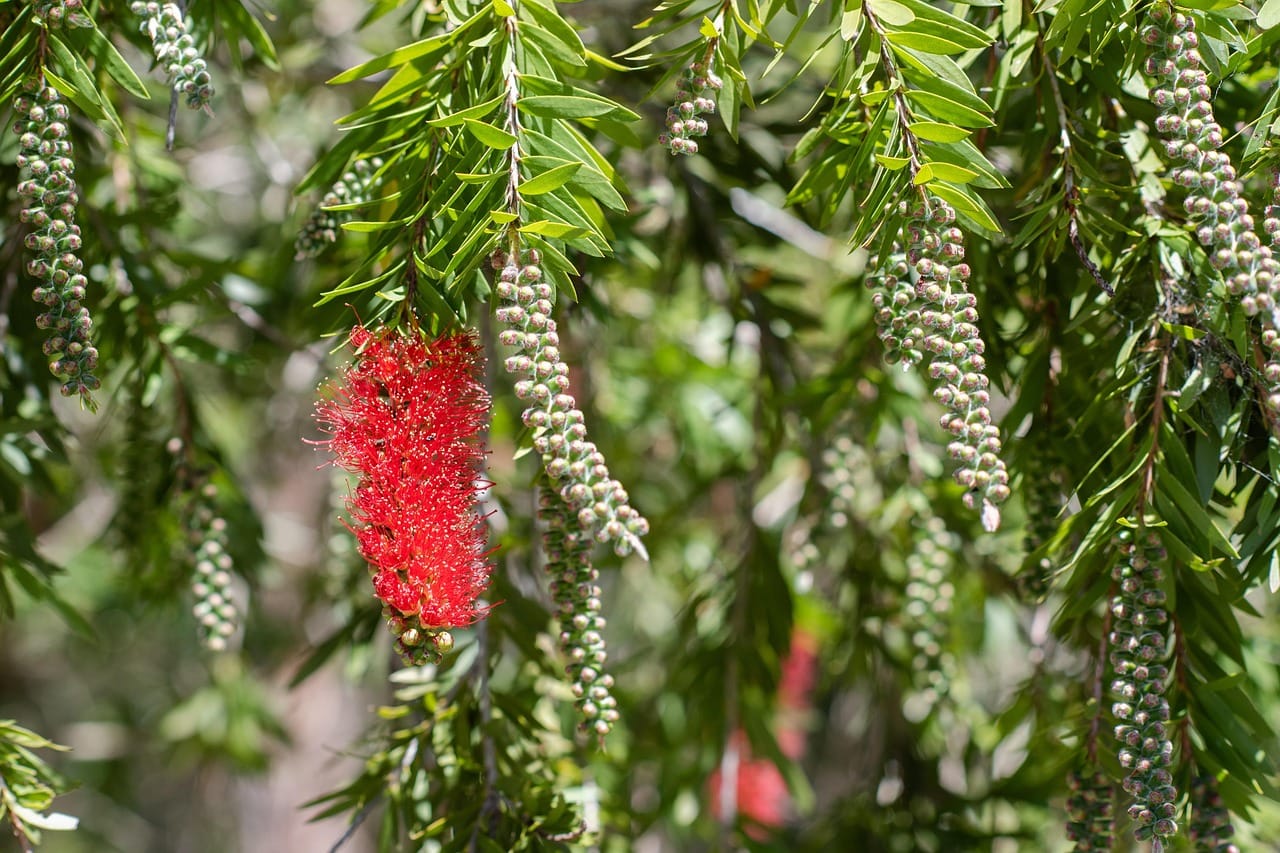We enjoy several benefits from Australia’s pleasant and generally sunny climate. However, we cannot deny that the heat and sunshine can bring challenges to gardeners. Thankfully, there are plenty of full sun plants that can add beauty to your yard. From annuals and perennials to woody and herbaceous plants, you’ll find several heat-tolerant plants that you can grow in Brisbane.
In this blog post, we’ll also share low-maintenance full-sun plants that busy gardeners will love. However, remember that “low maintenance” is not synonymous with “no maintenance.” As such, we’ve included specific care instructions in this article. You’ll get essential growing tips, including ideal soil options, watering frequency, and the best fertilisers for certain plants.
1. Blue Gem
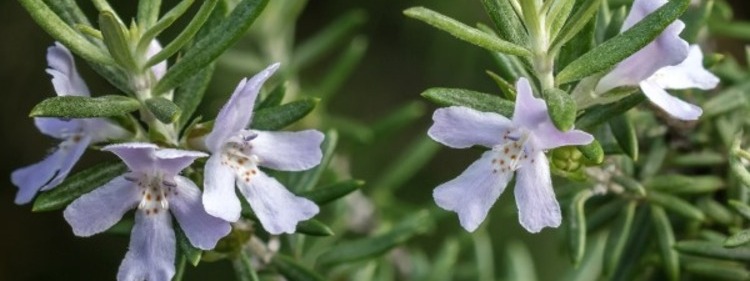
https://mygardenlife.com/plant-library/coast-rosemary-westringia-fruticosa
Scientific name: Westringia fruticosa
Also known as coastal rosemary, blue gems are dense, evergreen shrubs with a compact and rounded form. Moreover, it is one of the full sun plants on our list that requires minimal maintenance. While westringias come in several varieties, what we’re featuring is the variant with spectacular purple-blue flowers.
Blue gems can spread for up to 1.3 metres wide and grow as high as 1.5 metres. So, if you’re looking for a lovely and elegant hedge for your yard, this low-maintenance full-sun plant is the perfect option. However, make sure you clip yours regularly because this shrub tends to sprawl when left to grow freely.
Care Tips for Blue Gems
Soil
If you’re planning to grow your blue gem as a potted plant, choose a well-draining container. Moreover, we recommend using perlite soil mixed with some peat moss. Meanwhile, if you’re planting it directly into the ground, you don’t have to worry too much about the soil. Blue gems can survive in most types of soil, including sandy ones.
Location
With less sunlight, blue gems grow slower. So, if you want prolific blooms and healthy growth, place the plant in a location with full sun exposure or partial shade.
Water
Blue gems are among the low-maintenance full sun plants that do not require constant watering. All you need to do is check if at least 3cm of the soil is dry. To be safe, water the plant once a week, but don’t do it excessively.
The great thing about blue gems is that they can resist drought once they’ve matured. During the sunny season, you can reduce watering frequency by adding mulch to the soil.
Fertiliser
Fertilise the shrub occasionally to encourage it to grow those beautiful purplish-blue flowers. You can apply any organic or balanced, slow-release fertiliser to the soil around the plant.
2. Catmint
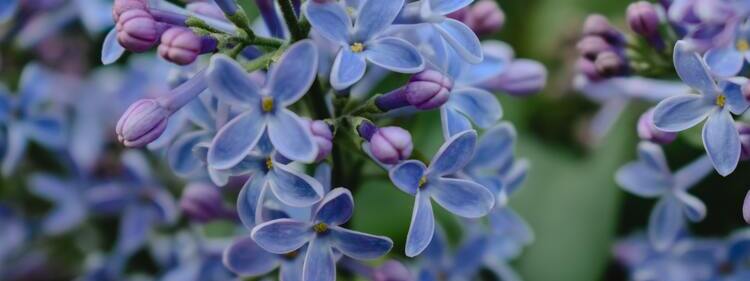
Photo by Eva Bronzini:
https://www.pexels.com/photo/close-up-shot-of-blue-flowers-6270181/
Scientific name: Nepeta x faassenii
Some people prefer having plants that do not need pampering. Well, catmint may be the ideal option for you. This hardy plant will continue to bloom for several months even when you don’t give it too much love and care. It is a close relative of catnips but is much showier and better behaved.
Catmints have billowy clusters of purple-blue flowers along with soft, greyish-green foliage. They start to bloom towards the end of spring and continue to do so until autumn. Moreover, the tubular flowers are great at attracting butterflies, bees, hummingbirds and other pollinators.
Care Tips for Catmint
Soil
Ideally, you should plant your catmint in well-draining and humus-rich soil. You can use almost any soil type, including rocky, sandy, or dry clay. Moreover, it can survive in soil conditions within the 5.0 to 8.0 pH range.
Location
Catmints are among the full-sun plants that can still survive in partial shade. When you plant and grow it in the ideal location, it will produce more of its wonderful lavender blooms.
Water
In their first year, catmints need frequent watering. During the initial week of planting, you must water it every couple of days. If it isn’t raining, you must use about an inch of water per week. However, once your catmints are established, they’ll rarely need watering because they can tolerate drought.
Fertiliser
Catmints do not rely heavily on fertilisers. You can use a handful of compost in the first year after planting. Adding more to the base before the colder season would suffice. In the following years, your catmints won’t need further fertilisation.
3. Daylily
Scientific name: Hemerocallis
When it comes to perennials, daylilies are among the winners. What’s great about this full sun plant is that it can grow faithfully without getting bothered by pests or diseases. Moreover, it doesn’t require frequent care and attention.
However, true to its name, this beauty has flowers that bloom in the morning and die by the evening. Even so, every stem produces about a dozen buds. So, you can expect the plant to keep blooming for several weeks.
While most perennials have limited uses in the yard, daylilies can be planted as borders along fences, ground covers, or even garden colour accents. You can grow them in groups of three or five, and they will look best when you pair them with small shrubs and ornamental grasses.
Care Tips for Daylilies
Soil
Daylilies can survive in all types of soil, but they thrive in loamy and fertile conditions. So, we don’t recommend clay or sandy soil because those options may be too dry. Instead, choose moist soil and add compost to keep it that way. Moreover, prevent root rot by choosing a well-draining site.
Location
Make sure that your daylilies get at least six hours of full sun every day. However, if it gets scorching hot in your area, you can keep your plants healthy by placing them in a partially shaded location. If you grow a darker variety, the afternoon shade can help it retain its colour. However, remember that such conditions may reduce the number of blooms.
Water
In the first growing season of your daylilies, remember to water regularly. Eventually, you’d only have to water the plant when the atmosphere is extremely dry. However, if you’re adding mulch to the soil, you can retain moisture.
Fertiliser
Your daylilies will thrive even without fertilisers. However, you can give them the best chance of surviving by adding compost at every turn of the season.
4. Fan Flower

Image by Whisker Flowers from Pixabay
https://pixabay.com/photos/fairy-fan-scaevola-aemula-fan-like-4493686/
Scientific name: Scaevola aemula
Known for their distinct, half-moon shape, fan flowers are evergreen perennials that come in various colours, including purple, blue, pink, and white. This warm-weather shrub is one of the full sun plants native to Australia. It is quickly becoming popular across the world, not only for its beauty but also for its ability to tolerate drought.
Fan flowers usually spread for about two feet and can grow up to a foot tall. Because of their growth habits, they are typically cultivated in hanging baskets, window boxes, landscape beds, and containers. Moreover, you should plant them if you want to attract pollinators like bees and butterflies.
Care Tips for Fan Flowers
Soil
Fan flowers do not need rich soil to thrive, and they will do well in averagely fertile soil. However, make sure you choose good-draining soil to encourage healthy growth. If you’re planting in a container, you can use a standard potting mix with some sand. Meanwhile, if you’re planting in the garden, opt for heavy clay soil for optimum porosity.
Location
Make sure that your fan flowers will get at least six hours of sun. So, choose a location that gets full to partial sunlight exposure. However, if your area's atmosphere is dry and hot, choose a location with dappled shade.
Water
While fan flowers are drought-tolerant, they need to be watered occasionally. However, when the soil is constantly wet, it may encourage root rot or attract fungus gnats. So, we recommend watering only when the soil surface is dry. After irrigation, you will notice wilted fan flowers quickly perking up.
Fertiliser
Because fan flowers are already used to the lean growing conditions in the country, they do not require frequent fertilising. At least once a month, apply a balanced flower fertiliser. You can do this during the growing season.
5. Kangaroo Paws
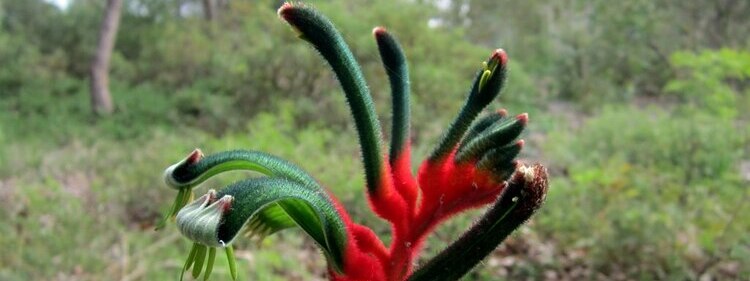
Photo by David Stanley
Scientific name: Anigozanthos
Also known as amber velvets, kangaroo paws are tufted evergreen perennials that thrive under the full sun. Because of their stunning foliage, they make great ground cover for bare areas. Besides, their bright flowers can add a pop of colour to your garden during the blooming season.
The most common colours for kangaroo paws are orange, yellow and red. However, you’ll also find other hue varieties, including pink, blue and purple. Native to Australia, kangaroo paws are not particular about their growing locations—you can plant them in the ground or in a container. However, if you plan to cultivate the dwarf varieties, they are more suitable for containers.
Care Tips for Kangaroo Paws
Soil
Kangaroo paws can grow in various types of soil. However, they thrive in slightly acidic, sandy soil. So, choose good-draining soil within the 5.8 to 6.5 pH range.
Location
Since kangaroo paws are full sun plants, you should choose a well-lit location. They should get at least six hours of sunlight exposure to encourage beautiful blooms. Don’t worry about the harsh afternoon sun because kangaroo paws can tolerate intense heat. On the other hand, if the plant doesn’t get enough sunlight, it may have fewer blooms.
Water
While kangaroo paws can tolerate drought, they still need moderately moist soil. However, avoid waterlogging the soil because doing so may cause root rot. So, before watering your kangaroo paws, touch the soil and check if it is dry. However, during the blooming season, the plant prefers more water.
Fertiliser
Kangaroo paws are among the full sun plants in Australia that do not require frequent fertilising. Before the flower stalks sprout, you can promote healthy growth by adding at least a cup of compost to the soil.
6. Lemon Myrtle

https://www.flickr.com/photos/tgerus/12928126964
Scientific name: Backhousia citridora
Lemon myrtles can quickly become your favourite if you love aromatic plants in your garden. Like the burgundy ficus, they also have glossy leaves. However, lemon myrtles usually emit a wonderful citric scent when arms brush past their leaves. Besides, its clusters of flowers add a stunning display to anyone’s landscape.
Natively growing in the coastal forests of Australia, the lemon myrtle can reach a height of 20 metres. However, in suburban gardens, it doesn’t grow as tall.
Aside from its wonderful scent and stunning look, lemon myrtles also bring a host of health benefits. Studies have shown that the plant’s leaf extract has anti-inflammatory and anti-oxidative properties. So, making tea out of lemon myrtle leaves can help you relieve body pains and even prevent diseases like Alzheimer’s, cancer and diabetes.
Care Tips for Lemon Myrtle
Soil
You can grow lemon myrtles in almost any type of soil as long as it’s well-draining. While this plant hates getting waterlogged, it thrives in moderately moist conditions. Moreover, choose slightly acidic soils within the 5.5 to 6.5 pH range.
Location
To encourage healthy growth and optimal blooms, plant your lemon myrtle in a sunny location. This plant needs about six hours of direct sunlight, but it can still survive under partial shade.
Water
Touch the soil to check if it’s dry before watering your lemon myrtle. You should do this once a week and more frequently when it gets dry and hot in your area. It takes about three years before a lemon myrtle tree reaches full maturity. During its growing phase, you should water the plant regularly.
Fertiliser
Lemon myrtles must be fed slow-release fertilisers once a year. However, you should do this after the flowering season. You can also apply diluted liquid fertiliser if granule varieties aren’t available.
7. Lime Tuff
Scientific name: Lomandra longifolia
Also known as spiny-head or basket grass, the lime tuff plant is a perennial that natively grows in Australia. This hardy and low-maintenance plant naturally sprouts along cliffs, creeks and rocky hillsides. Despite that, its strappy leaves make it ideal as a border plant for suburban gardens.
In spring, lime tuffs produce spikes of clustering flowers that can add a colour accent to your garden. This plant is a compact grower, reaching a width of up to 0.4 metres and a height of up to 0.2 meters. Lime tuffs are quite versatile and will look great when you plant them in groups. You can either use them as individual accents or as garden borders.
Care Tips for Lime Tuff
Soil
You can cultivate your lime tuff in almost any soil, but it will thrive in sandy to heavy clay soil. Moreover, the plant is not particular about the pH level of the soil.
Location
Lime tuff is one of the full sun plants that natively grows in Australia. Even so, it will still survive under partial shade and even moderate frosts.
Water
To help your newly planted lime tuff develop roots, make sure you water it regularly. Moreover, the plant must be watered at least once a week when the weather is too dry or hot. Once your lime tuff is established, it wouldn’t need frequent watering.
Fertiliser
For healthy growth, young lime tuffs need fertilisers once a month. However, when yours is established, you must add a layer of compost or an organic pelletised fertiliser once a year. Now, if you want your lime tuffs to look their best consistently, you can add fertiliser at least once a month.
8. Mandevilla
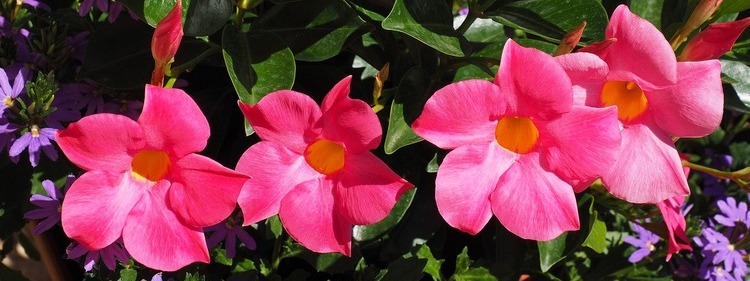
Image by Hans from Pixabay
https://pixabay.com/photos/mandevilla-blossom-bloom-calyx-4477857/
Scientific name: Mandevilla
Mandevilla is a full sun plant with trumpet-shaped blooms that come in pink, red, white and apricot. It has a climbing growth habit. So, you need to provide support as it grows. Once its flowers bloom in the summer, you’ll have a tropical feel in your garden.
While mandevillas do not cause pest issues, they still attract various types of insects. Moreover, they can be mildly toxic when ingested. So, make sure that they are planted in areas that kids or pets cannot reach. You should also wear gloves when handling the plant because its sap can cause skin irritation.
Care Tips for Mandevilla
Soil
Choose well-draining, sandy soil for your mandevilla, and don’t forget to add organic material. Moreover, plant it in a potting mix containing sand, leaf mould and peat moss.
Mandevillas thrive in slightly acidic to neutral pH soil. However, it can still survive in moderately alkaline conditions.
Location
Mandevillas are among the full sun plants in Australia that can tolerate partial shade. However, if you want them to produce many flowers, ensure they get at least six hours of direct light.
During the dry and hot season, the plant can appreciate the afternoon shade. So, we recommend planting it in a container or a hanging basket. This way, you can move it away from the harsh sun whenever necessary.
Water
One of the great things about mandevillas is that it can continue to flower even when you forget to water them. Even so, the plant prefers to grow in constantly moist soil. So, water it slowly to ensure that the soil is thoroughly wet. However, avoid waterlogging the plant because doing so may cause root rot. Also, remember to spray the leaves to get rid of pests.
Fertiliser
Add a balanced, slow-release fertiliser to the plant in the spring. If this option isn’t available, you can use a half-strength liquid fertiliser once every two weeks. Moreover, you can boost the nutrient levels by adding compost into the mix.
9. Marigolds

Image by Hans from Pixabay.
https://pixabay.com/photos/marigold-flower-blossom-bloom-3528402/
Scientific name: Tagetes
Marigolds are popular worldwide, not only for their bright appeal but also for how easy it is to care for them. While they natively grow in Mexico and Central America, these perennials will thrive in any location that gets a lot of sunshine.
They are widely used to celebrate the Day of the Dead. However, the beauty of marigolds can easily brighten up any type of garden.
Depending on your plant variety, you may get yellow, orange, red, copper, gold or even white flowers. Wild animals tend to avoid marigolds because of the distinct odour that marigold leaves and stems emit. So, cultivating them along with your other plants can be great in deterring pests.
Care Tips for Marigolds
Soil
Marigolds can survive in most types of soil as long as they are well-draining. However, make sure that you choose moderately neutral pH levels, ideally between 6.0 to 7.0. Moreover, you don’t need to mix a lot of organic matter into the soil. Marigolds tend to thrive in leaner types of soil.
Location
To encourage healthy growth and abundant display of flowers, grow your marigolds under the full sun. Otherwise, choosing a shady location may cause yours to be leggy. Besides, your marigolds may not produce as many blooms as they could.
Water
Newly planted marigolds must be watered regularly. While they can tolerate some level of drought, they shouldn’t be left in dry soil for more than a day or two. Moreover, if the atmosphere gets dry or hot, you should water your marigolds every day.
A few weeks after the plant has established its roots, it will become more tolerant to drought. Even so, you should water it once a week to get abundant blooms.
Fertiliser
Marigolds usually thrive even without supplemental fertiliser. However, you should deadhead them regularly to encourage more blooms.
10. Native Fuchsia
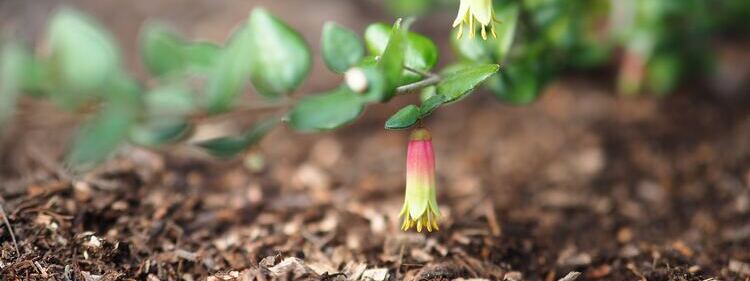
https://unsplash.com/photos/KWXfFG7F2SE
Scientific name: Correa reflexa
When you know how to care for native fuchsias properly, you’ll have lovely bell-shaped flowers almost the entire year. Endemic to South Australia, this hardy shrub can grow up to 1.2 metres high and about a metre wide. Gardeners usually cultivate native fuchsias for their stunning, tubular blooms that can come in various colours, including pink, red, cream or yellow.
Once established, native fuchsias can be hardy and drought-tolerant. You can cultivate them as a feature plant in your shrubbery or a beautiful addition to your cottage garden. Moreover, they’re quite versatile, and you can grow them as a low hedge or a container plant.
Besides, their bell-shaped flowers are rich in nectar. So, you can expect a wonderful bird show in your garden.
Care Tips for Native Fuchsia
Soil
Native fuchsias are not particular about soil as long as it has good drainage. Moreover, you can choose any soil pH level. So, you can even cultivate them directly on sandy soil if you live in a coastal area.
Location
Correa reflexas naturally occur in South Australia, New South Wales, Tasmania, Victoria and Queensland. So, they grow best in coastal areas. We recommend cultivating them in a location that gets full to partial sunlight. Without enough sunlight, their leaves may start dropping.
Water
During the growing season, you regularly and deeply water your native fuchsia. Doing so will encourage abundant flowering and healthy growth. You should do this once a week to ensure that all the soil layers have enough moisture.
Fertiliser
Potting soils are usually mixed with enough nutrients that encourage healthy growth. However, when it’s time to move your native fuchsia to a bigger pot, remember to replenish its fertiliser.
11. Petunia
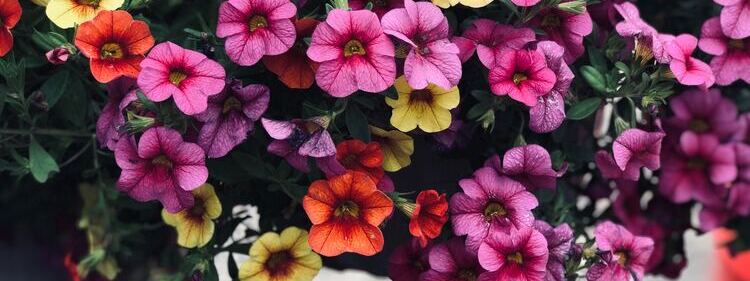
Scientific name: Petunia × atkinsiana
In many areas, petunias are considered annuals. However, in certain locations, they can be cultivated as tender perennials. Their bright and lovely blooms come in many colours, including pink, white, purple and red. Besides, they keep producing flowers through many seasons.
Whether you’re cultivating petunias in hanging baskets, borders or containers, they can easily add a splash of colour to your garden. Besides, some varieties come with a faint scent. You can expect your petunia to grow from 6 to 18 inches, and they can spread up to 4 feet.
Care Tips for Petunia
Soil
Choose fertile, light soil when planting your petunias. As long as the soil has good drainage, your petunias will survive in it. However, they prefer growing in moderately acidic soil pH.
Location
Since petunia is a full sun plant, choose a location that gets at least six hours of direct sunlight each day. However, when it gets too hot or dry, you should move it to a partially shaded area in the afternoon. Doing so will encourage abundant blooms.
Besides, when planting your petunias, make sure that they have enough room to grow—particularly at least a foot apart.
Water
As a flowering annual, your petunia won’t appreciate long spells of drought. However, soggy soil will cause it to develop root rot. So, when there’s no rainfall, you should soak its bed with around two inches of water every week.
Fertiliser
Newly planted petunias need a balanced fertiliser and some compost to encourage healthy growth. As they grow, you should use liquid fertiliser designed for flowering plants once every three weeks. However, do note that some petunias with a spreading growth habit need to be fertilised every week. So, it is best that you check the special care instructions for the particular variety you’re cultivating.
12. Pigface
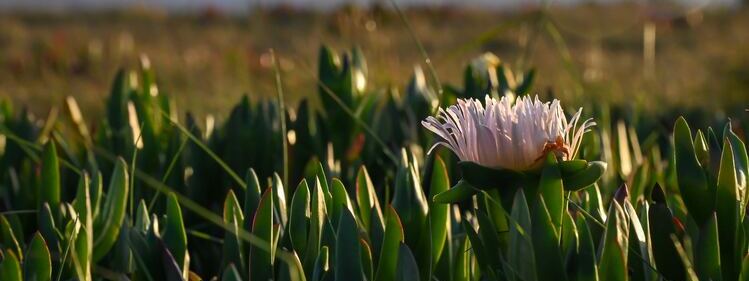
Scientific name: Carpobrotus glaucescens
Pigface is a full sun plant with a creeping growth habit. While it naturally grows in South Africa, there are about six species that are native to Australia. Since it is a succulent, its fleshy, thick leaves can hold water, allowing it to tolerate some level of drought.
Because a pigface plant has a trailing growth habit, it can be a great ground cover for sunny areas. Besides, it produces purple or pink flowers that look like daisies.
You can cultivate pigfaces as ground cover, especially since they have a spreading growth habit. Moreover, they naturally occur in coastal areas and have been cultivated for sand stabilisation.
Care Tips for Pigface
Soil
Choose sandy or even rocky soil with good drainage. Pigface plants do not thrive in loamy soil, especially since this is not their native habitat.
Location
Pigface plants will thrive under the full sun. It can also survive under partial shade in subtropical climates. Since they are coastal plants, they can tolerate drought and salty air.
Water
Your pigface will develop root rot if you waterlog it. So, you should only water it to the point that will keep the soil consistently moist. Keep doing this until the plant has established itself. Once your pigface reaches maturity, you only need to water it when the soil is dry to the touch. After all, the plant is a succulent which means it is drought-tolerant.
Fertiliser
Since pigface plants are succulents that can grow in poor environments, they rarely need fertilisers. However, they will still appreciate slow-release fertiliser at the beginning of summer.
Even so, don’t use fertilisers during the plant’s dormancy period. During this time, your pigface won’t be able to absorb the excessive nutrients. Consequently, this will affect the plant’s growth.
13. Sago Palm

Scientific name: Cycas revoluta
While some homeowners prefer indoor plants like the bird’s nest fern, others like cultivating full sun plants. If you’re the latter, consider growing the sago palm. Natively growing in Japan, this virtually maintenance-free plant will add character to your garden with its enormous leaves sprouting from its woody crown.
Remember that sago palms are for patient gardeners. These slow-growing plants only gain a few inches every year. Besides, most of them only produce a single frond annually.
However, once they mature, you’ll appreciate how their symmetrical ring grows feather-like foliage. Sago palms may reach up to three feet after several years. Moreover, they can live up to two centuries.
Care Tips for Sago Palm
Soil
While sago palms can tolerate any type of soil, choose one with good drainage. Ideally, you should also go for sandy soil enriched with organic matter. Moreover, you should neutral to slightly acidic soil pH would be suitable for growing sago palms. If you’re cultivating them in containers, use a potting mix designed for palms or cacti.
Location
While sago palms can tolerate the full sun, they grow best under bright, indirect light. So, choose a location that gets partial shade, especially in the afternoon. However, be careful because inadequate sunlight may cause unhealthy growth and sparse leaves.
Water
Sago palms can survive dry spells. However, they thrive in constantly moist soil. So, you need to water the plant whenever the soil is dry to the touch. Even so, you shouldn’t waterlog it to avoid creating soggy soil. Note that sago palms do not actively grow during colder seasons. So, you should reduce watering during this time.
Fertiliser
Throughout the growing season, remember to add liquid fertiliser at least once a month. Alternatively, you can use slow-release fertiliser at least three times during this time. Don’t forget to follow the directions on the package. For liquid fertilisers, the ratio is typically 18-8-18 (nitrogen-phosphorus-potassium).
14. Salvia
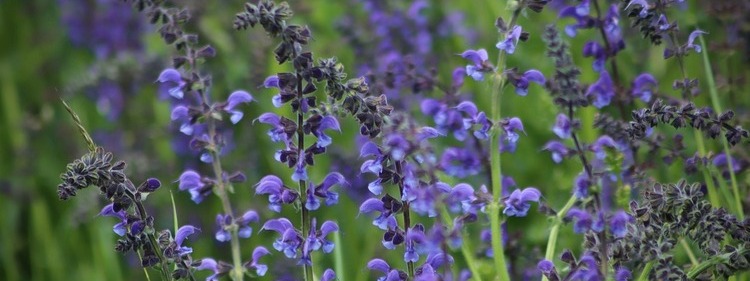
Scientific name: Lamiaceae
Salvias are aromatic herbs that produce velvety leaves and colourful flowers with tubular blooms. This plant is part of the mint family and has been used as tonic for centuries for its stimulating properties. With its flowers that come in white, purple, pink, blue and red, it can be cultivated as an ornamental plant.
Don’t be surprised if your salvia looks like sage. The two terms are used interchangeably, depending on the plant’s purpose. If you’re using it as an herb, you refer to it as sage. Meanwhile, if you’re cultivating it as an ornamental plant, you refer to it as salvia.
The tubular flowers of salvias often attract butterflies, bees and hummingbirds. Even so, this plant is not appealing to rabbits, deer or other wild animals. Moreover, you won’t have issues with garden pests.
Care Tips for Salvia
Soil
You’ll need well-draining soil when growing salvias. You can improve soil drainage by adding sand to the mix.
Location
Salvias produce abundant flowers when they grow under the full sun. So, make sure you choose a location that gets at least six hours of sunlight a day.
Water
Salvias are perennials that can tolerate drought once they are established. However, when they are newly planted, they need a moderate amount of water. So, give yours an inch of water per week during the growing season.
Fertiliser
Salvias are among the full sun plants in Australia that require minimal maintenance. Usually, they will grow well even with little to no fertiliser. Now, if you insist on feeding your salvias, do so at the end of the blooming season.
15. Spider Lily
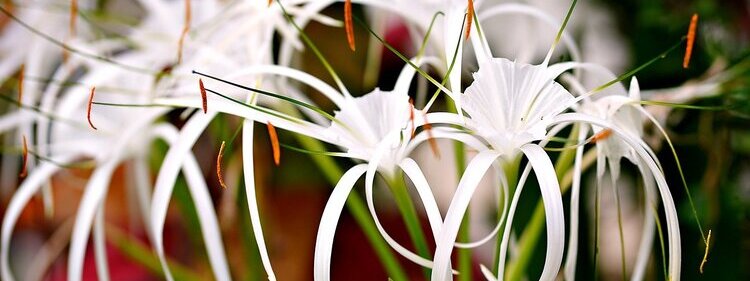
Scientific name: Hymenocallis
While spider lilies natively grow in the southern US and South America, they can also be cultivated as a full sun plant in Australia. After all, these perennials grow from bulbs in warm tropical and subtropical conditions. With their strappy green foliage and stunning white flowers, spider lilies can easily add character to your garden.
Spider lilies naturally grow along pond and marsh margins. However, homeowners cultivate them primarily for their fragrant and showy flowers.
Usually, spider lilies grow up to two feet tall. Meanwhile, every long-tubed bloom has narrow, spider-like petals that sprout from a central, yellow-green eye. While spider lilies do not encounter serious disease or insect problems, they attract mealy bugs, caterpillars, and snails.
Care Tips for Spider Lily
Soil
Because the spider lily is a tropical plant, it will grow best in moist soil that is enriched with humus and nutrients. However, make sure to choose free-draining soil because they prefer getting a little dry during the colder months. Preparing the ideal soil conditions will boost the chances of spider lilies prolifically producing flowers in the blooming season.
Location
If you want a stunning floral display in your garden, plant your spider lilies in a sunny spot. They can survive in a partially shaded area, but they may not produce as many flowers. Spider lilies look great along garden borders, especially during the blooming season.
Water
As we’ve mentioned, spider lilies thrive in moist soil. So, you shouldn’t let the soil become dry to the touch, except during the colder season. However, the soil shouldn’t be soggy because that would cause root rot.
Fertiliser
Use a diluted, balanced fertiliser at least twice a month. You’ll get the best results by using seaweed-based fertilisers.
16. Yellow Calla Lilies
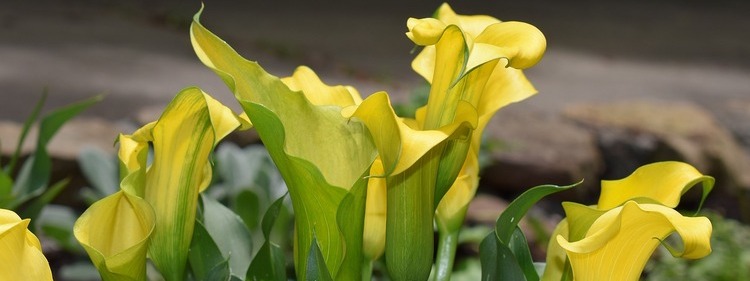
Scientific name: Zantedeschia elliottiana
You’ll love seeing the leaves of yellow calla lilies grow during spring followed by their tuberous, trumpet-shaped blooms. Besides, they are among the recipients of the Royal Horticultural Society’s Award of Garden Merit. So, you know that the yellow calla lily is a full sun plant that even novice gardeners can cultivate.
Yellow calla lilies natively grow in South Africa. However, in Australia, it can be cultivated as a container plant. It also looks great in borders or as cut flowers. The cheerful colour of their flowers can easily brighten any space. It will feel like it’s always summer in your garden or indoor space when you have yellow calla lilies around.
Care Tips for Yellow Calla Lilies
Soil
Plant your yellow calla lilies in rich soil with good drainage to encourage beautiful blooms. Because they naturally grow along ponds, they prefer moist soil. However, avoid waterlogging the soil because doing so will cause the plant to develop root rot. Before planting your yellow calla lilies, make sure to increase the soil’s nutritional density by adding organic matter.
Location
Yellow calla lilies grow best in warm environments. So, make sure that yours get at least six hours of sunlight every day. However, if it gets hot and humid in your area, choose a spot that gets partial shade in the afternoon.
Water
You can water your yellow calla lilies at least once a week. However, you may have to do that more frequently when it gets hot and dry in your area. If you plant your yellow calla lilies as potted indoor plants, make sure that the soil is constantly moist. Keep in mind that they may dry out sooner than the plants you cultivated directly in the ground.
Fertiliser
At the beginning of the growing season, add fertilisers to your yellow calla lilies to encourage abundant flowering. You’ll get the best results from well-balanced fertilisers. On the other hand, the plant may not produce as many flowers when you use a nitrogen-heavy blend.
FAQs about Full Sun Plants
Q: What grows best in full hot sun?
Some of the plants that can tolerate the full, hot sun include the lantana, lemon verbena, cosmos, marigold, geranium and salvia.
Q: What are the most durable plants?
If you think you don’t have a green thumb, here are some plants you can keep alive:
Bromeliads
Peace Lilies
Photos plants
Q: What plants are good for the hot weather in Australia?
All of the plants we mentioned in this article can grow in the hot conditions in Australia. Now, if you prefer options that natively grow in the country, some options include creeping boobiallas, yellow buttons and flower peas.
Q: What plant is the hardest to keep alive?
Many gardeners have mentioned how difficult it is to keep the fiddle leaf fig alive. This plant does not like changes in the environment. So, it doesn’t respond well when you move it around.
Great Alternatives to Full Sun Plants
In Australia, it’s quite easy to grow full sun plants. As long as you have a spacious garden or yard, you can conveniently choose the perfect spot. However, what if you live in the city and you don’t have an outdoor space? In that case, you can only cultivate houseplants.
While we are known for our stunning blooms, Flowers Across Brisbane also offers a collection of indoor plants. From tuberous alocasias to gloriously fenestrated monsteras, we have plants that you’ll surely love. Moreover, you can have them delivered to a loved one’s doorstep.
Order your plants before 2 p.m. weekdays and 10am Saturdays to enjoy same-day plant delivery!
